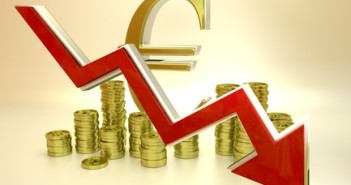- The EUR/USD trading lower, consolidating earlier falls.
- Germany’s coalition issues come to a head and also trade wars weigh.
- The charts show a continuation of the bearish trend.
The EUR/USD is trading in the mid 1.1500s, consolidating earlier losses. The US Dollar rose across the board on Wednesday, extending the trend of the past few months. Trade concerns remain in the limelight. The Trump Administration decided not to invoke an old law to limit Chinese investment in the US. That law, based on national security, would have given the President direct discretion. Instead, the US will block investment via the Committee on Foreign Investment in the United States (CIFUS). Markets see the move as a softening as an institution would take its time and make decisions in a cool-headed manner.
Nevertheless, the US is still clashing with China on tariffs. The duties on $50 billion worth of goods are set to come into effect on July 6th, and there are no signs it will be topped. China’s counter-measures are also in the works. The trade tensions between the US and Europe also continue, as counter-tariffs brought the EU. Markets are finding it hard to stage a convincing recovery.
In the euro-zone, leaders will come together for the European Union Summit. The event was originally all about Brexit, but both sides seem to kick the can down the road. Instead, the fate of Germany’s government and Chancellor Angela Merkel’s future are at risk. The CSU, Merkel’s Bavarian sister party, faces regional elections in October and a challenge from the far-right AfD. The party has adopted a tougher stance on migration and is at loggerheads with the Chancellor.
CSU leader Horst Seehofer is waiting for the results of the EU Summit to decide if to stay in the coalition or leave. In the meantime, the other coalition partner, the center-left SPD, has held crisis meetings prepare for potentially new elections. The crisis dampens the mood in Germany, reeling from the shocking ouster from the World Cup, and it weighs on the common currency.
Apart from the political developments, Spanish inflation came out at 2.3% YoY in the preliminary read for June, broadly as expected. Preliminary figures from German states show marginally lower annual CPI in June than in May, not a big surprise. The all-German figure is published later on.
The US publishes its final version of Q1 GDP. The report is expected to confirm the 2.2% annualized growth rate. See how to trade the event with EUR/USD.
EUR/USD Technical Analysis
The 4-hour chart shows that the pair is trading below the 50 and the 200 moving averages, a bearish sign. In addition, the Relative Strength Index (RSI) is around 30, flirting with the oversold territory.
The pair has support at 1.1508 which is 2018 low and the lowest since July 2017. 1.1480 worked as resistance back then and is the next line to watch. Even lower, 1.1420 played a role last summer.
On the topside, 1.1573 capped the pair in recent days. It is followed by 1.1628 which was a swing low on June 25th and 1.1720 that held the pair down on June 26th.
More:Â Trade wars: Only a stock market crash can stop Trump, 3 reasons




